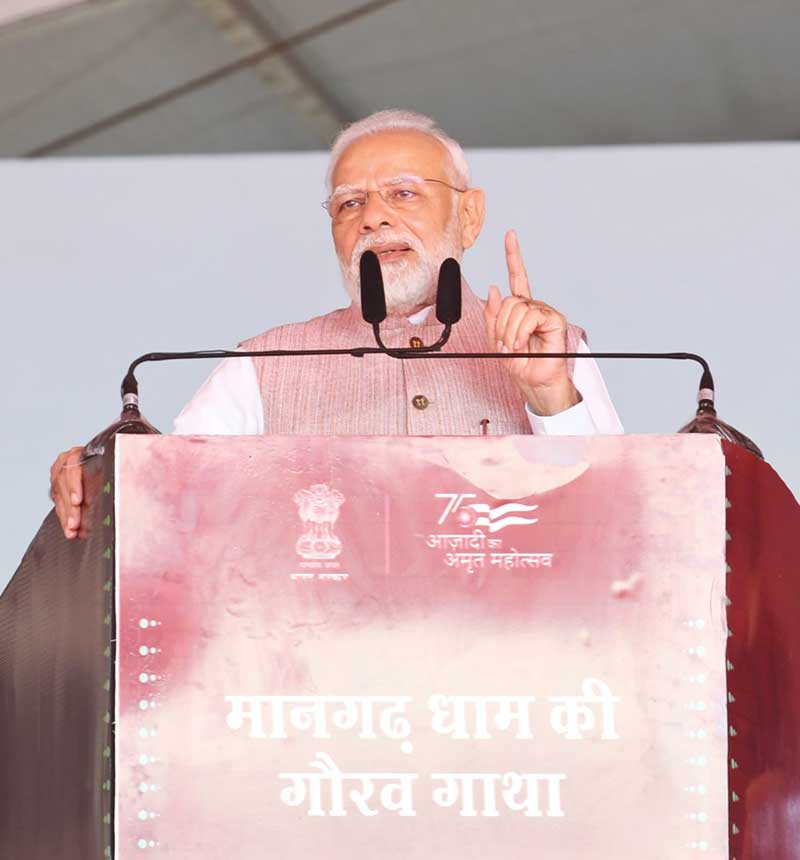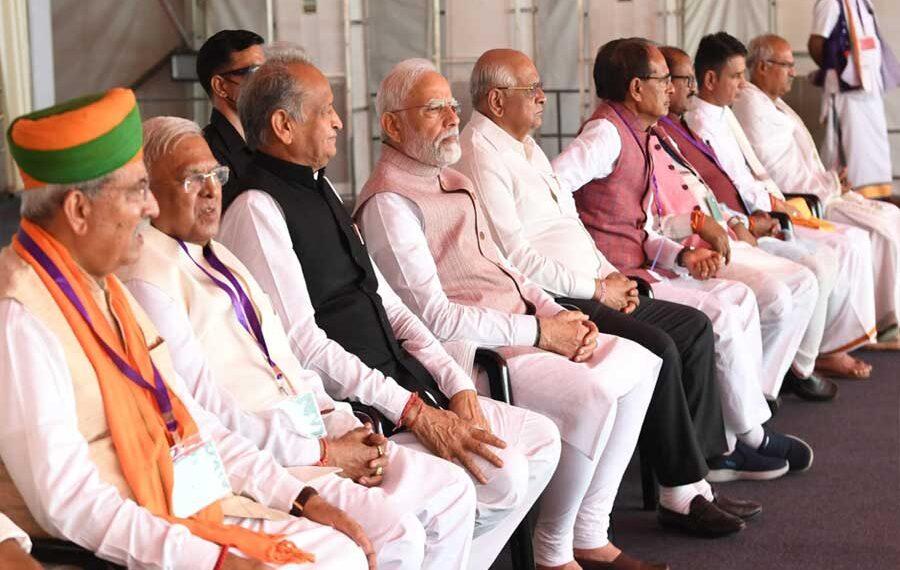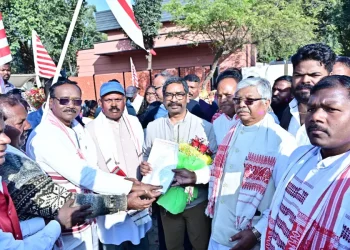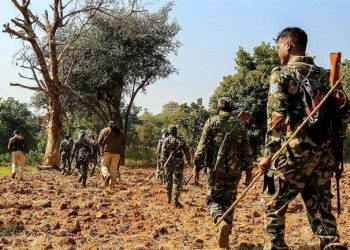Ahmedabad
Prime Minister Narendra Modi on Tuesday said the central government wants a grand expansion of Mangarh Dham and asked the state governments of Rajasthan, Gujarat, Madhya Pradesh and Maharashtra to work together and have a detailed discussion about preparing a roadmap so that the memorial site of tribal leader Govind Guru finds a place on the world map.
He attended a public programme ‘Mangarh Dham ki Gaurav Gatha’ and paid homage to the sacrifices of unsung tribal heroes and martyrs of the freedom struggle.
He performed ‘Dhuni Darshan’ and paid floral tributes to the statue of Govind Guru, whose death Anniversary fell on October 30.
More than 1.5 lakh unarmed Bhils and other tribes engaged in a long stand-off which rallied at Mangarh Hill on November 17, 1913 under the leadership of Govind Guru. The Britishers opened fire at the gathering to suppress the protest leading to 1500 tribals being martyred.
Ahead of polls in Gujarat, Rajasthan and Madhya Pradesh, Modi’s visit to Mangarh Dham assumes political significance. Located on the Gujarat-Rajasthan border, Mangarh Dham with a large population of tribal people is also situated in the proximity of Madhya Pradesh. Mangarh Hill situated in Banswara district of Rajasthan holds special importance for the Bhil community and other tribes of Rajasthan, Gujarat, and Madhya Pradesh.
The tribal community holds sway on 99Assembly seats spread across the three States. While 27 assembly seats in Gujarat are reserved for tribal candidates, in the case of Rajasthan and Madhya Pradesh it is 25 and 47 seats respectively.
Addressing the large gathering of tribal communities, the Prime Minister said that it is always inspiring to be in the holy land of Mangarh which is a symbol of tapasya (penance), sacrifice, bravery and sacrifice of our tribal Bravehearts.

“Mangarh is a shared heritage of the people of Rajasthan, Maharashtra, Madhya Pradesh and Gujarat. As the Chief Minister of Gujarat, I had a chance to serve the region of Gujarat side of Mangarh. Govind Guru spent the last years of his life here, and his energy and knowledge can still be felt in the soil of this land,” he said.
Remembering the tribal people’s contribution in India’s freedom struggle under Govind Guru’s leadership, Modi said that unfortunately such a significant and impactful event of the freedom struggle could not find its place in the history books. In this Azadi ka Amrit Mahotsav, India is filling this void and correcting the mistakes that were made decades ago, he added.
“India’s past, history, present and India’s future will never be complete without the tribal community. Every page of the story of our freedom struggle is filled with tribal valour. During the 1780s Santhal Sangram was fought under the leadership of Tilka Manjhi.
“During 1830-32 the country witnessed Larka Andolan under the leadership of Budhu Bhagat. In 1855 Sidhu-Kanhu Kranti energised the nation. Bhagwan Birsa Munda inspired everyone with his energy and patriotism. The Adivasi Samaj stood with Maharana Pratap,” he said, adding that Alluri Sitarama Raju in Andhra Pradesh too stood for India’s freedom struggle.
The nation is indebted to the tribal community and their sacrifice and preserving India’s character in nature, environment, culture as well as traditions, said the Prime Minister.
Rajasthan Chief Minister Ashok Gehlot in his speech insisted Prime Minister Modi to announce Mangarh Dham as national memorial to give fitting tribute to Govind Guru.
Apart from Gehlot, Gujarat Chief Minister Bhupendra Patel and Madhya Pradesh CM Shivraj Singh Chouhan were present during the event. While Patel termed the Mangarh massacre as more brutal than Jallianwala Bagh, Chouhan said the history of the freedom struggle was not taught correctly. He said freedom was not served to India on a platter but thousands of freedom fighters were hanged, jailed and many others shed their blood and it was after it that the country got independence.






















